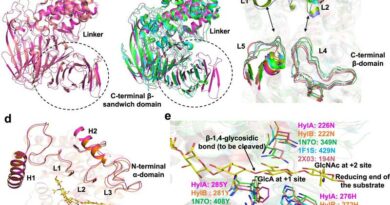Revolutionary Nanozyme for Stronger Collagen

The paper titled “Expanding Limits of Artificial Enzymes“ explores a novel role for nanozymes, which are synthetic enzyme mimics made from nanomaterials. Specifically, the study focuses on a manganese-based oxidase nanozyme (MnN) and its ability to activate and crosslink collagen, a structural protein abundant in connective tissues. Traditional methods for crosslinking collagen often result in toxicity, structural damage, or high costs. This study demonstrates that MnN can crosslink collagen in a safe and efficient manner, presenting a promising advancement in biomedical applications.
Key Findings and Methodology
In their experiments, the researchers used MnN to catalyze a reaction between collagen and tannic acid (TA), a natural compound, under mild acidic conditions. This process preserved the triple-helical structure of collagen, which is crucial for its function in biological tissues. The MnN acts at its exposed facets to facilitate crosslinking without the need for harsh conditions that can degrade collagen.
The crosslinked collagen exhibited remarkable resistance to degradation by collagenase, an enzyme that typically breaks down collagen in biological tissues. This resistance is significant because it suggests that the modified collagen could be used in various biomedical applications, such as tissue engineering and regenerative medicine, where long-lasting biomaterials are needed.
Limitations and Future Directions
While the study demonstrates promising results, it acknowledges certain limitations:
- Substrate Specificity: The specificity of MnN for different substrates beyond collagen needs further investigation to determine its versatility.
- Long-term Stability and Biocompatibility: The long-term stability and biocompatibility of MnN-crosslinked collagen in living organisms remain to be thoroughly tested.
Future research should focus on exploring these aspects to fully understand the potential and any possible side effects of MnN in practical applications.
This research provides a new approach to using nanozymes in protein chemistry, especially for biomedical applications. By overcoming some of the limitations of traditional enzymes and crosslinking methods, MnN could help develop more robust and biocompatible materials. The study opens avenues for creating durable biomaterials essential for tissue engineering, wound healing, and regenerative medicine. However, further studies are required to validate its effectiveness and safety in vivo.
References
- Original Research Paper. Expanding Limits of Artificial Enzymes
Keywords
Nanozymes, Manganese-based Oxidase Nanozyme (MnN), Collagen Crosslinking, Tannic Acid (TA), Artificial Enzymes, Biomedical Applications, Tissue Engineering, Regenerative Medicine, Biocompatible Materials, Enzyme Mimics
Disclaimer: The information presented in this article is intended for informational purposes only and reflects the findings of the referenced study as of the publication date. While the research shows promising results, further studies and clinical trials are necessary to fully understand the potential applications and safety of MnN in biomedical settings. For detailed information, please refer to the original research paper or consult professionals in the field.



